8 Tips for Shooting Extremely Wide Angles
Wide angle photography can be fun and challenging at the same time. On one hand, it's great to pull in so much of a scene with a single shot. On the other hand, it can be difficult to produce a well composed photo at such a wide perspective. So I've pulled together a few photos and pieces of advice for shooting with wide angle lenses.
For the purpose of this article, we'll consider anything at or below 30mm (full frame equiv) to be a wide angle.
1. GO VERTICAL
Shooting in a portrait orientation with a wide angle lens can produce wonderful images, even landscapes (which are more commonly shot using landscape orientation). Going vertical allows you to pack a lot of information into the frame, basically from your feet to way up in the sky.
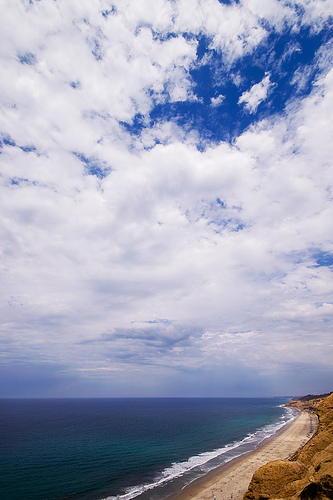
Photo by Brian Auer [CC by-nc-nd]
2. GO HORIZONTAL
Though vertical shots are fun, horizontals will sometimes be better suited for the subject. Evaluate the scene and decide which elements you want to be prominent in the photo.
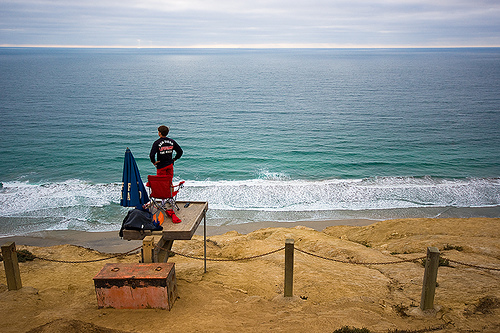
Photo by Brian Auer [CC by-nc-nd]
3. EMPHASIZE THE FOREGROUND
Get low or point the camera down to make your foreground the main subject. Since objects in the foreground are much closer than the background, they will appear quite large in comparison. As you get closer to your subject, this emphasis becomes stronger.
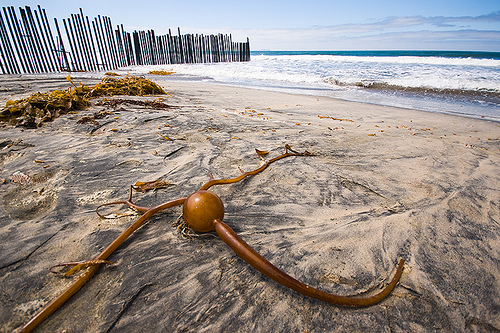
Photo by Brian Auer [CC by-nc-nd]

Photo by Garry [CC by-nc-sa]
4. SHOOT FOR THE SKY
If you have some nice cloud formations, don't forget to point that lens up at the sky. The wide angle can pull in a huge portion of the sky and make for a great scene.

Photo by Brian Auer [CC by-nc-nd]
5. PLAY WITH GEOMETRY
Capturing shapes and geometry with wide angles forces you to look at the world a bit differently. Look for large structures containing strong lines or curves, and move around until you find those shapes.
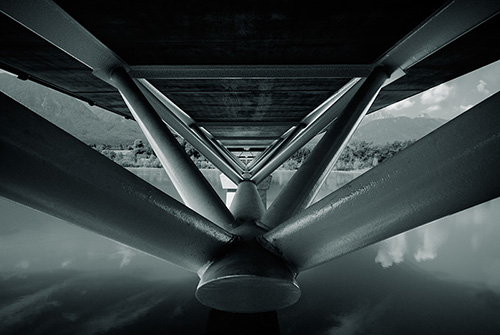
Photo by Andreas Manessinger [©]
6. TAKE A PORTRAIT
Wide angle lenses can be used to take portraits, if you're mindful of the distortions caused by the lens. If you shoot around 30mm (or 20mm for 1.5x crop sensors) and keep your subject near center, the distortion will usually be minimal. On the other hand, you can use very wide angles and get up close to produce a distorted portrait on purpose.
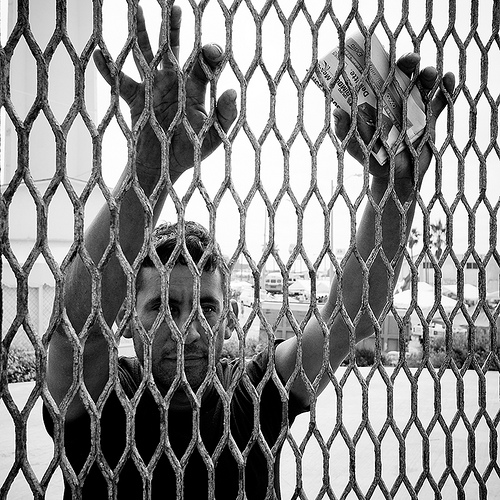
Photo by Brian Auer [CC by-nc-nd]
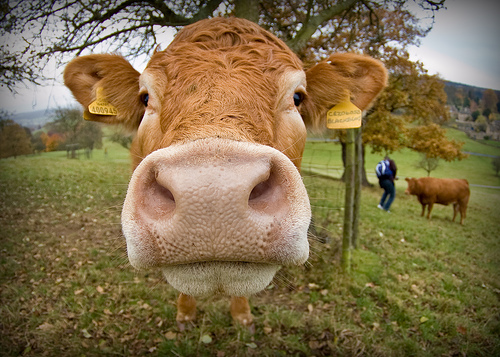
Photo by Dave Wild [CC by-nc]
7. TRY A DIFFERENT ANGLE
Wide angle lenses allow you to capture a large scene at very close distances. This means that you can shoot from all sorts of different angles that wouldn't be possible with normal or telephoto lenses.
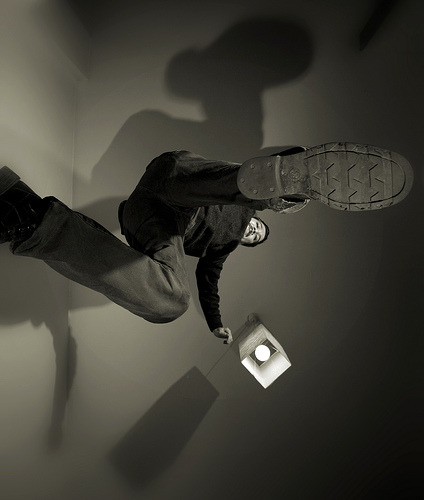
Photo by Stefano Corso [CC by-nc-nd]
8. WATCH THAT DISTORTION
Wide angle lenses are prone to various distortions at extreme focal lengths. You might encounter things like barrel or pincushion distortion, especially at the edges and corners of your frame. If you want to avoid them, keep things like people or buildings away from these areas. But don't always try to avoid them — use them to your advantage if the subjects are suited for it.

Photo by Cristian Paul [CC by-nc-nd]

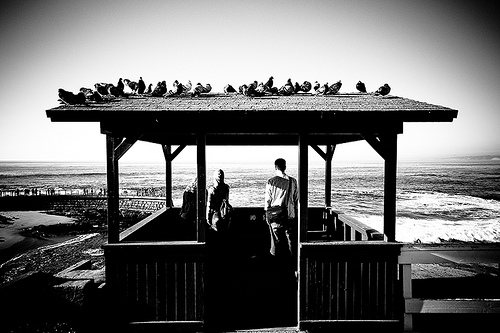


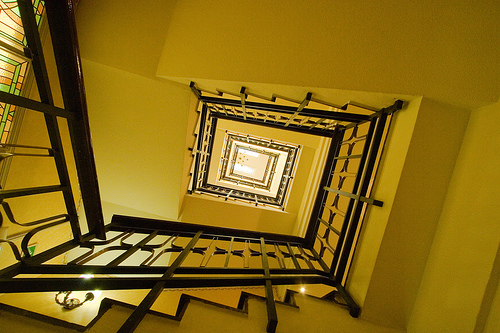

Bryan Villarin
May 9, 2009Nice article, man. Not sure what to add… 🙂
Dan
May 10, 2009I’ve got a wide angle lens coming in the post, so it was great to read this article.
Kevin Barnes
May 11, 2009Hi Brian, Very giid artcle and great images. Thanks, Kevin
brett maxwell - wedding photographer
May 11, 2009hey, I landed here from Digital Pro Talk and these are some great tips. Reminds me that I need to play with my 17-40L more (on full-frame). Looks like a great site all-around also, I’ll be subscribing promptly!
Gary
May 12, 2009I just got my UWA about 3 weeks ago, so all tips are greatly appreciated. I have already found though, that it is a lens that you have to really think about. It takes more effort to use it, but the results can be so different and unusual, that it is totally worth the effort.
Dani
May 14, 2009Thanks for this. I have been trying the vertical thing alot and seems to be working for me. I think i’m having a hard time determining when it’s appropriate and will enhance an image versus just using it cause it’s cool. I guess either is fine. Your pics are great and the tips are helpful. Thanks!
okinawa living
May 16, 2009Those pictures are great, like the shell myself.
René
May 20, 2009Hi Brian.
Very very nice article. Easy to read – and understand. Its my first visit here, and havent read any of your other articles (yet!).
The way you “show the way” with your excelent photos makes it semi-amateur friendly.
As a journalist who also takes quite a lot of pictures I have often thought of using wide angle. But until know I have left it to the pros.. I’m gonna try it out for portrait (like the first photo in your nr. 6 – not the second 🙂 )
Regarding photos like the last one by Josh: I just never understood when and for what these are the best illustration…
jeremy
May 20, 2009There are some beautiful images here. Superb examples of how to make the most of w-a lenses.
I notice you referred to a 30mm lens. I’d not have had that down as an ‘extremely wide angle’ lens which is the title of this article. Of course that doesn’t detract at all from the comment you made there.
I really like wide angle photography. It is a shame that because of having to accommodate mirror boxes in SLRs the lenses have to retro-focus making them big and heavy, especially in MF cameras. I prefer rangefinder cameras which allow for purer ‘true’ focal length lenses.
I’d love to get my hands on a Hasselblad SWC.
Brian Auer
May 20, 2009Well… I had to pick a number for the sake of simplicity and understanding. I shoot a lot with my Sigma 10-20mm lens on my Sony a700, so I figured that what I get at 20mm (30mm equiv) is pretty wide compared to “normal” lenses. It’s definitely not “extremely” wide angle, but it’s still wide.
Martin Gommel
May 23, 2009Thanks Brian for sharing. Will go into my browserFruits tommorow.
LW
May 28, 2009Thanks for this. I have been trying the vertical thing alot and seems to be working for me. I think i’m having a hard time determining when it’s appropriate and will enhance an image versus just using it cause it’s cool. I guess either is fine. Your pics are great and the tips are helpful. Thanks!